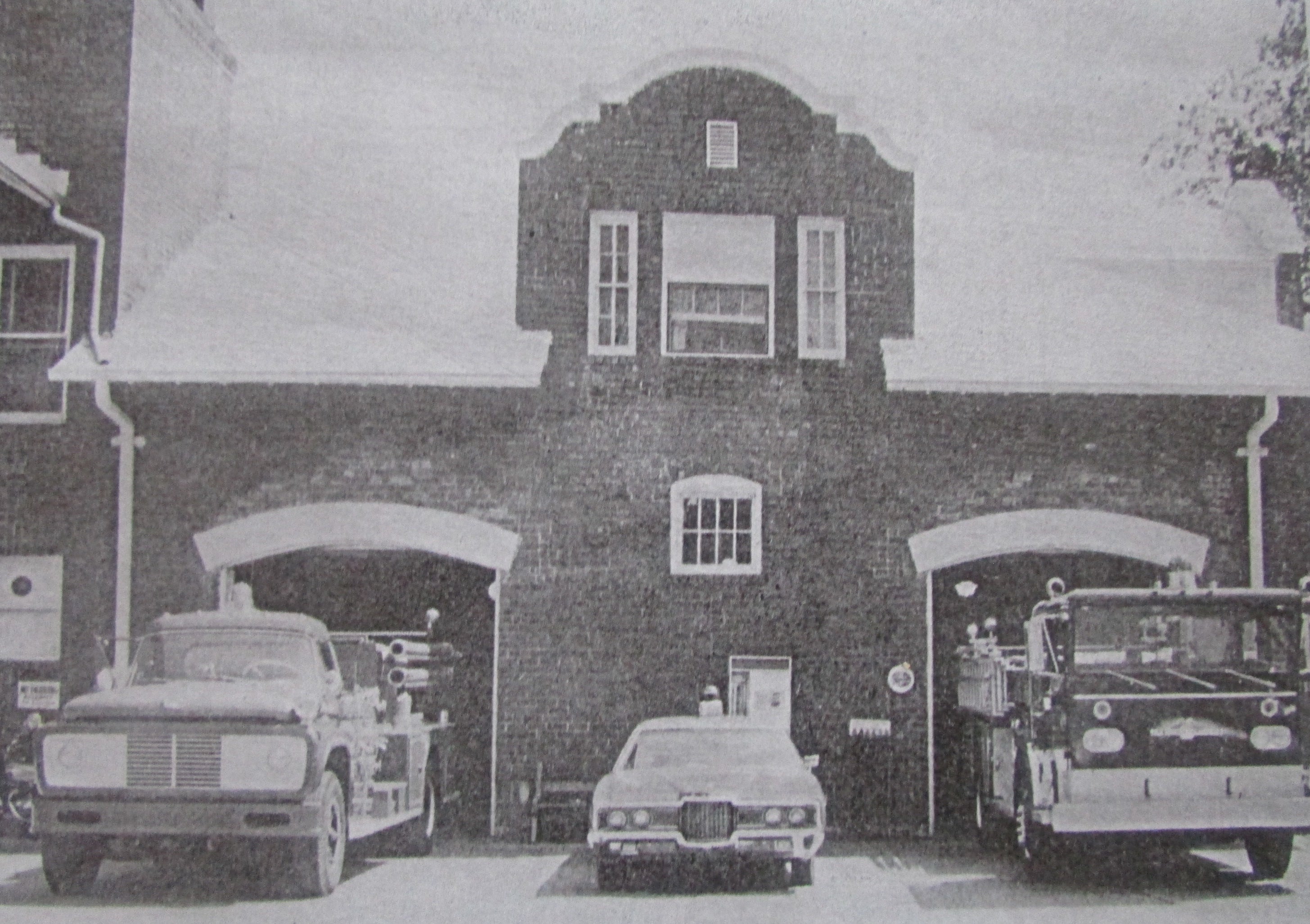Sparks Caused Disasters – Part 1
Published 12:30 pm Sunday, October 29, 2023
|
Getting your Trinity Audio player ready...
|
As I researched Decatur County during her birthday year, I found that Bainbridge had suffered several large fires in her past, mostly around the late 1800s to early 1900s. Some even took lives as well as buildings and homes. This made fire a main concern for our community because so many structures were made of wood and also the fact that there was a lack of readily available water to fight the fires. This showed how important it was to have an efficient fire department.
Therefore, I thought that today we could learn more about the history of our fire departments by looking into past fires. Then, next week we can take a look into the history of those places that early fire departments called “home” and on to the story of our iconic fire department building. A shady bench in Willis Park would be an ideal place as most of these fires were in the downtown area. We will be sure to have water with us.
Let’s begin with the history of the Stonewall Fire Engine Company No. 1, which was organized on December 7, 1868 and incorporated on May 27, 1869. At the start, it consisted of 26 men and then grew to 40 men.
Another fire department was the Oak City Hook and Ladder Company, which was in existence in 1870 and incorporated sometime before 1875. In a book which contained the minutes of one of their early meetings, it stated that in 1892, the Oak City Hook and Ladder Company also had 40 men and the newly formed Morgan Engine Company had 50 men. All three fire departments were trained and ready to keep the city of Bainbridge safe.
The book also described the uniforms that they wore. There were dark blue, flannel shirts with sailor collars, trimmed with two rows of narrow red braid. This same braid was also used around the cuffs. Buttons were white pearl, and the size of a five cent piece. Officer’s shirts were the same. Also, they had caps that were made of red leather, with a blue band. On the front was the company’s name, printed in red letters on a white shield. Officers also had badges with the engraved insignia of their office on a silver shield.
The first fire I found on record was a large one that happened on the night of April 5, 1871, involving the destruction of the Masonic Temple and six other buildings. It was very dangerous for the firemen as they were in an exposed position during the fire, which was so hot that it blistered the paint on their equipment and necessitated throwing water on the men to enable them to keep fighting and not get burned.
The next one took place in a boarding house, which was a large, two story building at the northwest corner of Water and West Streets. This occurred on April 8, 1871. Along with the boarding house, a small dwelling on the north side also burned. Farther down, and to the north, there was another house that was used as a school and also as the Episcopal Church that was destroyed by this same fire. Four buildings burned that day. The main problem was not being able to have access to enough water.
A small fire was reported in the “Southern Spy” newspaper on March 2, 1872. This time a building containing three stores, on the southeast corner of Broad and Water Streets burned down.
A most memorable fire occurred on September 24th , 1874. This was one of the largest fires in Bainbridge. The building that was destroyed was the original Presbyterian Church. It burned along with stores and stables that were on both sides of West Street, from Troupe to Broughton Streets. Then, on down Broughton, one third of the buildings facing the square were also lost. All in all, this fire which began in a stable in downtown, destroyed the Presbyterian Church and thirteen other downtown businesses.
In an article that was in the “Bainbridge Democrat”, described the fire as: “The saddest loss for Bainbridge. The old Presbyterian Church was a commanding structure, with its deep toned bell that everyone loved to hear calling them to the church services. However, this bell also served as the regular fire alarm. When it rang that last alarm on September 24th, the belfry was on fire. In a way, it rang its own death knell”.
After the fire, the Presbyterian Church was rebuilt on the northeast corner of Broad and Evans Streets. It was a wooden structure painted grey with white trim, plus a painted steeple which eventually had to be removed because it kept getting hit by lightning. The east and west sides had five windows each. The building also featured Gothic arches at the top of the windows. Their glass was red, blue and gold, except for the middle pane which was made of embossed white glass. This church was dismantled in 1899 and the present building was built on the corner of Shotwell and Broad Streets.
What remained of that first Presbyterian Church building are three valuable objects – silver communion chalice, the pulpit Bible saved from the fire in 1874, and the minutes of the meetings of the church’s ruling body.
The next most destructive fire took place on July 14, 1887. This one almost destroyed the whole north side of the square. The fire started at around 4 pm and originated at the rear of the old, wooden livery stable, situated near the Sharon House which was owned then by Captain J. S. Desverges.
It was first discovered by some boys who were playing in the yard by the hotel. About five seconds later, a news writer for the “Bainbridge Democrat”, saw the flames just beginning to come through the roof. In a few moments, the fire alarm sounded and every man rushed to the scene.
It was amazing how fast the flames went from rear to front. The intensity of heat became terrific and quickly was intolerable. Doors, shutters and windows blinds were used by the hose men, so they could bring water in as close as they could. Hook and Ladder men covered nearby buildings by bringing water in buckets. However, now eleven other buildings were on fire, mostly because of sparks from burning shingles that were sent up in the air from the roof of the stable.
Ax men pulled and cut away at the connecting buildings and fences. Forty brave men manned the pumps of the Stonewall Fire Engine and sent a steady stream of water into the intersection of Broad and Water Streets. For a half hour the fight against the fire was fierce. Men took turns to keep water constantly flowing until the flames were beaten down. When the fire was out, the men were greeted by shouts of triumph from the crowd that had gathered.
The next large fire occurred on April 26th, 1888. It was a Sunday afternoon, at about 4 pm when a home, in the east part of town, that was owned by Caroline Donelson, was suddenly gone. It only took a few moments for this large house to succumb to the fire.
When it was first discovered, it could have been extinguished had there been a ladder to reach the roof of the adjoining stove room, which was in the L part of the house. However, the roof was dry, and a brisk breeze which fanned the flames was no help. The fire soon spread. The alarm brought both the Stonewall and Oak City fire departments to the house. Even though they were only a half a mile away, nothing could be done. The firemen then focused on saving the out buildings and the adjacent house of Mr. H. Nussbaum. This was done by throwing buckets of water on the flames and applying wet blankets. Neighbors joined in and with all of this help, most of the furniture and house hold effects were removed. The source of the fire was determined to be a defective stove flue.
Another destructive house fire occurred on October 18, 1888. This was when the J. D. Dollar home burned down. It happened when Mr. Dollar returned home and found that his family had gone out to visit his wife’s father, which was a half a mile away. This is when he built a small fire in the fireplace and left to go to join his family. It was just less than an hour afterwards that the house and its entire contents were consumed by fire. The light from the flames attracted the attention of Mr. Dollar, who arrived home in time to save a few kitchen furnishings. All and all it was a heavy loss.
One of the most tragic fires that I read about occurred on January 24th, 1889. On this Monday morning, Mr. Butler and his eldest daughter were in the fields cleaning up some land, cutting away brush, and hauling out trash and logs. Mr. Butler was on one side of the field, while his daughter was on the other.
She caught his attention when he heard her screaming. Instantly, he ran towards her. Unfortunately, with her clothes on fire, she ran to meet him. Before he could reach her, she fainted and fell to the ground. He did all he could to extinguish the flames. He tried to tear her clothes away but they would not rip and he had to use his pocket knife. This caused his hands to be severely burned.
Doctor Peacock had been called and when he reached her, her limbs and body were horribly burned and she had no pulse. He dressed her burns as best he could and tried to revive her but she had passed.
Just seven months later, at 1 am on a Sunday morning, August 29th, 1889, the fire bell was heard along with the thundering hooves of horses and the screams of the fire wagons. Bainbridge was so lit up by fire that it was like day light. It didn’t take long for almost the whole town to wake up and be on the alert. The cause of these flames came from the home of W. C. Jones, whose two year old house was opposite the Methodist Church.
Fire blazed all over the structure as flames were licking at its walls. Inside were five little children, Mr. Jones and his niece, Ms. McLauchlin. All were sleeping on the second floor. No one in the Jones’ house knew it was on fire until a neighbor from next door came and woke them up.
The fire seemed to have started in the stove room on the outside of the house, by the kitchen, which was attached to the main building by a short platform. The stove room which sat on the north side of the house and the kitchen, had been vacant since Saturday at 2 pm.
With a stiff breeze blowing towards the south and the fire having plenty of fuel, the flames spread rapidly. Danger was so great, that everyone had to evacuate immediately. Mr. Jones grabbed the children and his niece, who had a narrow escape from suffocation. No one had time to change and came out in their night clothes with only one outer garment thrown over their shoulders.
For a short time, the flames endangered all of the adjacent buildings. There was a constant train of water buckets to save the residence of Mr. John O’Donnell next door. Fortunately, a hard rain began to fall around 9 am that thoroughly wet down the shingles and calmed the flames, or else the Methodist Church and other structures may have burned.
Ms. McLauchlin managed to save one trunk which contained valuable papers. However, all clothing and jewels were lost. All the silver, china and glassware was destroyed. A few pieces of furniture were also saved but a treasured piano was not. However, most importantly, no one was hurt.
The early nineteen hundreds were not good to Bainbridge for not only did she suffer a devastating flood but also, the city hall was destroyed by fire. This happened on a Friday night when the city was threatened not only with the burning of the city offices but for a time, it looked like the fire would spread into other sections of downtown. However, the evening was calm and this danger was averted. If there was any type of wind, the entire block would have been destroyed.
It all started when the firemen received an alarm from a “telegraph box” which later was believed to have been a prank. When they returned to the station, they found flames erupting from the building. They were able to drive the second fire truck out into the street but the building was badly damaged, the public library, which at that time, was located in the city hall was ruined and all city offices badly damaged by smoke and water.
For several days, the fire trucks were kept parked in the middle of Broad Street, in front of the telephone office so the operators could run out and tell them if they were needed. They then moved into a vacant garage till the fire station could be rebuilt.
The stores that were above city hall did not escape and were burned. The water that was used to put out the fire damaged the library. It was thought that the fire started in a wire connection that also served the fire department which was in the same building. The insurance company started work immediately. Meanwhile, the library, city offices and the fire department had temporary quarters.
Please join me next week and we will find out about our beautiful fire house.






